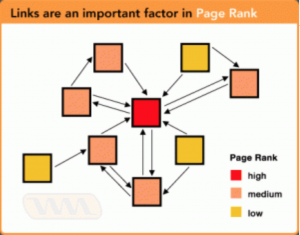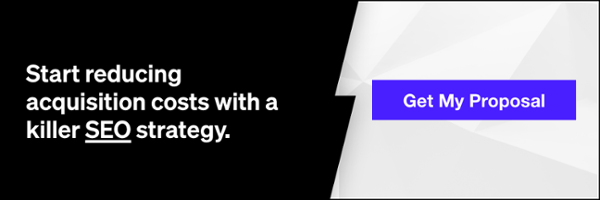Lunch n Learn Series: On-Page SEO

A few weeks ago, the entire Power Digital team sat down to listen to the all-knowing, SEO ninja herself, Nicole Grodesky, teach us a little bit about on-page SEO. We covered everything from topic modeling to the keyword research process and then some. Being as cross-channeled as we are at PDM, it is important that we all get together from time to time to learn more about what other departments have been up to and learn more about their strategy.
Nicole’s on-page SEO Lunch n Learn was just as valuable to the content team who writes the on-page content as it was to the PR team who works hard to secure links to those pages. And there’s not a doubt in my mind that the social, paid media, and web dev teams learned a thing or two about how they can better integrate SEOs strategies into their own.
As much as we’d like to keep all of this valuable knowledge to ourselves, we’re givers here at PDM and think that many of you would benefit from Nicole’s SEO wisdom. Let’s dive in!
Common SEO Questions
Because we weren’t all SEO experts in the room, Nicole began by addressing some common on-page SEO questions that typically come up when speaking with clients or fellow marketers. So, if any of these questions have ever crossed your mind, read carefully because Nicole has the answer!
- What is topic modeling? Ever since Google launched its Hummingbird update, it now has the ability to recognize key phrases and their relationships to other terms within a site’s content. Topic modeling helps search engines such as Google make sense of the large volume of text found on the web. For SEOs, topic modeling entails incorporating relevant keywords into your on-page optimizations.
- What is the most important on-page factor? Title Tags… duh
- What are on-page optimizations? On-page optimizations encompass everything that we can optimize on a page. This includes content, title tags, meta descriptions, image alt text, H1s and H2s… basically everything!
Related: 5 Essential SEO Tips Even Traditional Marketers Need to Know
While there were many other questions tossed around, these three definitely stood out as a few that were on the majority of people’s minds.
On-Page Strategy Checklist
For anyone who doesn’t have hours upon hours to spend learning all of the idiosyncrasies that come with on-page optimization but still want to ensure that they are following SEO best practices, this short checklist should help:
- Keyword Research & Mapping: Ensure that you understand the purpose of each page you are optimizing and doing keyword research around appropriate terms and phrases based on competition level and page purpose.
- Title Tags: Keep your title tag to a 50-60 character minimum and make sure that it is an accurate and concise description of a page’s content.
- Meta Descriptions: Make sure that your meta description accurately describe the content of the web page and that it is between the 150 to 160 character range.
- H1s: Try to incorporate a keyword in your H1 tag and, if possible, pose it as a question.
- Image Alt Tags: Use your alt tag to describe what is on the image you are including. This will help improve the accessibility of your website.
- Word Count: According to a study by Backlinko, longer content tends to rank significantly higher on Google. On-page content should be at least 300 words.
- Internal Links: Add two to three internal links to every post.
But… if you want to do your due diligence and go the extra mile, it may be worth your time to dive a little bit deeper into these topics. Making sure that you are performing your on-page optimizations correctly the first time will yield great results and even save you from encountering issues down the line. Let’s dive in… even further!
Keyword Research & Mapping
Ah good ‘ol keyword research – you can’t live with it but you can’t live without it. Sure, it takes a long time and is oftentimes a grueling process, but keyword research lays the foundation for a successful on-page SEO strategy. And therefore, it deserves your undivided attention.
The keyword research and mapping process has several components to it, including:
- Identifying the page you want to optimize
- Determining the purpose of the page (what do you want the user to do next?)
- Researching the topic/product that the page is about
- Checking your Domain Authority
- Performing a competitive analysis
- Searching for keywords
As you can see (and probably already know), keyword research is no walk in the park. But, when done correctly, yields tremendous results. When performing keyword research, make sure that you are equipped with the proper tools to make the process as efficient and painless as possible.
Keyword Research Tools
Nicole recommended using SEMRush for the competitive and current ranking analysis. This tool allows you to see what keywords any given website is ranking for as well as the average monthly search volume and ranking position. When you see which keywords you are on the brink of ranking on page one for, you can begin to incorporate that information into your content and outreach strategies.
Related: Content, SEO, & PR – Three Peas in a Pod
Two great tools for finding keywords are AdWords Keyword Planner and the Concatenating Tool. Use AdWords Keyword Planner to build a list of keywords that may pertain to that specific page. The concatenating tool Permutationer is also a great tool to use when brainstorming additional keywords. Simply type in keywords to create a variety of different keyword combinations.
Now that you have a list of potential keywords, it is time to determine whether or not you can actually rank for them! Use Moz’s Keyword Difficulty Tool to determine the competition surrounding those keywords.
Meta Data
As mentioned above, your meta data such as title tags, meta descriptions, H1s, etc. are crucial to on-page SEO success. Nicole shared some insider tips and tricks for ensuring that your meta data makes the cut every time:
- Title Tags: Title tags are the most important on page SEO ranking factor. You want to make sure that the most important keywords are towards the front of the tag. Keep your title tags to a 60-character minimum.
- Meta Descriptions: Meta Descriptions act as ad copy and are associated with click-through-rate, which is correlated with keyword rankings. Keep your meta descriptions to 160 characters using a snippet editor such as SEOmofo.
- Header Tags & H1s: Think of your header tags the same way you’d organize a paper in school. What is an H1 tag? It serves as the “title” of your page, while H2s or H3s act as “subtitles” to structure your content. Make sure that you only have one H1 on a page.
- Image Alt Tags: The alt attribute is used to describe the contents of an image file. Google uses this information to help determine the best image to return for a user’s query.
Word Count
You can’t get lazy when writing on-page content. Because longer content can cover the topic more adequately than shorter, superficial articles, it tends to rank better. In fact, SERPIQ found that content length correlates directly with SERP position. This means that the more content you have, the better chances you have at ranking!
Related: How Much Do You Know About SEO? Take the Quiz!
So, while it might sound difficult to write 2,000+ words on refrigerators, the time spent researching the topic will pay off in the long run.
Topic Modeling + Semantic Search
As mentioned above, when Google launched their Hummingbird Update, they gained the ability to make sense of a broad spectrum of ideas in web copy by finding a common piece and assessing the varying relationships and subtopics associated with it. In other words, the algorithm is becoming more conversational. Google wants to be your best friend and give you exactly what you’re looking for.
Nicole and the SEO team uses a nifty tool called Market Muse to analyze your web content and find high-quality keywords and content ideas based on your focus topic. Using semantic algorithms, the MarketMuse Keyword Relevance Engine™ generates a list of related topics and computes their degree of relevance to your focus topic.
Internal Linking & Anchor Text
When optimizing your on-page content, don’t forget about your internal linking strategy! Make sure that you have high-quality links pointing back to the page you’re optimizing as well as well as outbound links on said page.

Wrapping Up
As you can see, Nicole held quite the lunch and learn. Not only did she give everyone an inside look at the on-page optimization process, but also showed us how to use some of the awesome tools she has in her SEO arsenal. Use Nicole’s helpful tips to improve your on-page optimization strategy and start seeing those pages’ rankings skyrocket!
SEO Strategy
Book a 15-min call to discuss.
Our Editorial Standards
Reviewed for Accuracy
Every piece is fact-checked for precision.
Up-to-Date Research
We reflect the latest trends and insights.
Credible References
Backed by trusted industry sources.
Actionable & Insight-Driven
Strategic takeaways for real results.






